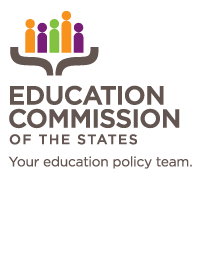Schools can be ideal settings to address youth mental health needs, yet they struggle to provide effective services. According to the National Center for Education Statistics, 96% of public schools reported providing student mental health services, but only 56% agreed that they could provide these services to all students effectively. These schools cited large caseloads, workforce strains and lack of funding as the top three barriers.
School mental health services may include more than clinical services. Research shows that universal mental health education programs can improve knowledge, attitudes and help-seeking. New York passed the first legislation requiring this education for K-12 students in 2016. According to a recent policy scan, more than half of the U.S. now has similar policies by statute, regulation, legislation or learning standards. These policies vary significantly with differences in specificity, resources, intended audience, scope and clarity of education content, standards development, parent removal options and requirement conditions.
Despite the number of states embracing these policies, implementation issues exist. Following New York’s landmark law, an audit in 2022 revealed opportunities for improvement, including the recommendation to develop evaluation criteria to ensure adherence to the law. These results are not surprising since mental health education had not been part of K-12 or pre-service curricula and has no national guidance.
These policies try to address the youth mental health crisis through promotion, prevention and early intervention but only benefit students and families when implemented effectively. So, how can policymakers ensure their intentions meet the mark?
First, mental health education policies need clear expectations.
What Information Could Be Taught?
Mental health literacy offers an evidence-based, four-component framework for mental health education that can be adapted to developmentally and culturally appropriate levels. This includes understanding how to:
- Foster and maintain positive mental health.
- Recognize common mental health disorders and treatments.
- Seek help for yourself and others.
- Reduce stigma.
Policies could include the components of mental health literacy to offer a clearer path for K-12 implementation. This helps distinguish mental health education learning goals from the goals of social and emotional learning. While mental health literacy includes the four-component framework mentioned above, social and emotional learning addresses these five areas: self-awareness, self-management, social awareness, relationship skills, and responsible decision-making, according to the Collaborative for Academic, Social, and Emotional Learning. Mental health literacy and social and emotional learning are related much like math and science; they complement one another and may have overlapping goals, but they are distinct in how they function.
Who Will Deliver This Education? How Will They Be Prepared?
Often, mental health education mandates fall on school mental health clinicians. Not only does this further strain an understaffed workforce, but it also overlooks what is needed for any quality education: expertise in teaching. Educators can teach about mental health effectively, but they need content knowledge, confidence and support.
Policies could require and support foundational mental health literacy training for pre-service educators and for educators seeking state teaching certification. For example, Mental Health Literacy Aware for Educators from MHLC provides foundational mental health literacy information in a 60-minute, asynchronous format; early data shows an increase of over 80% in educator confidence about mental health literacy.
How Will the Content Be Selected, Implemented and Evaluated?
Unfunded mandates pose significant barriers. Because K-12 education has not historically included mental health in curricula, schools need funding for quality training, selection and purchase of materials, resources and guidance for program evaluation, and ongoing leadership support.
Policies could allocate these essential funds and establish and fund new mental health education leadership roles. Policymakers could also expand access to funding that allows more school mental health dollars to be used for universal, Tier 1 mental health education.
With effective policies in place, schools will be better equipped to help youth thrive.




